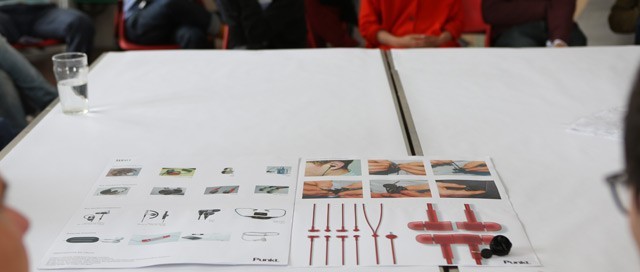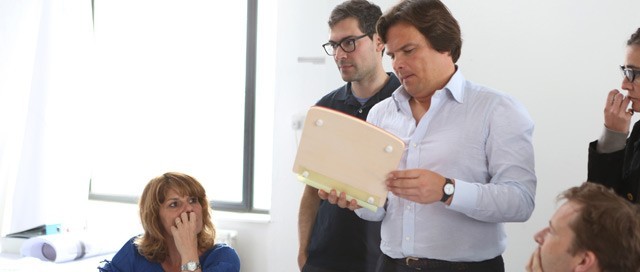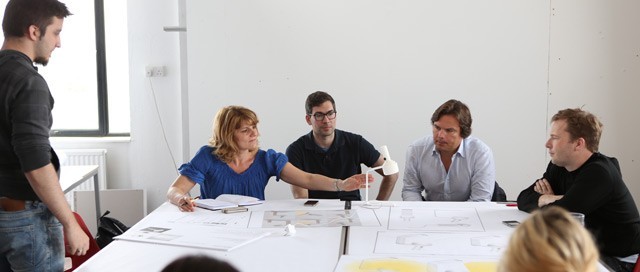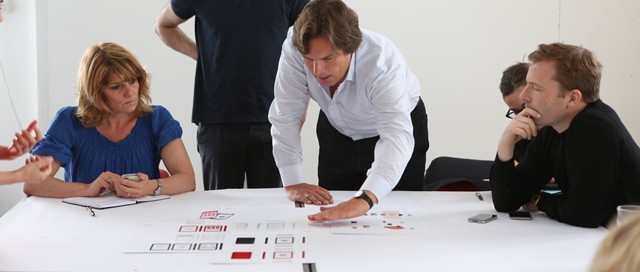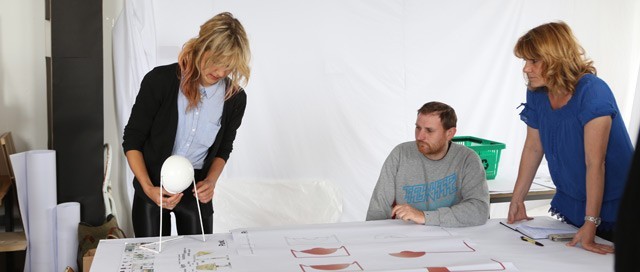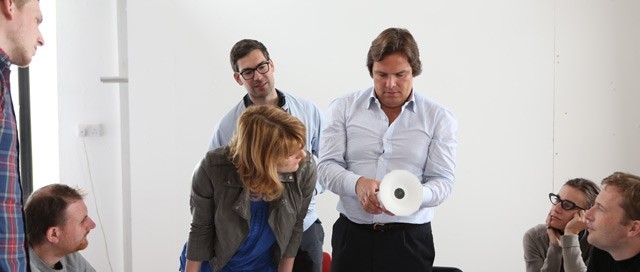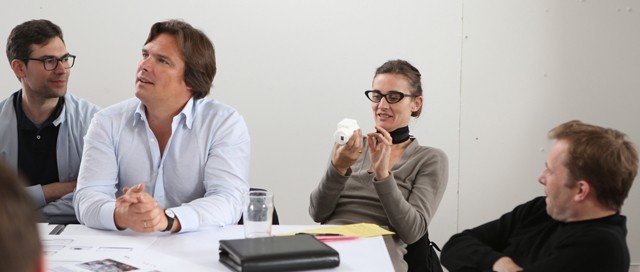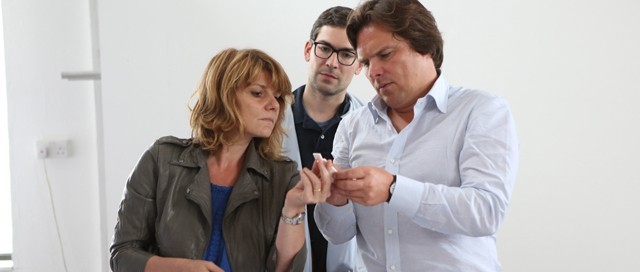Royal College of Art design programme summary
The five week Royal College of Art (RCA) design programme tutored by John Tree, Andre Klauser, and Ben Wilson ended on June 6 2012. We travelled to London to see what the 10 participating students from the industrial design platform had come up with for Punkt..
Hosted in the RCA building in Kensington, the closing session was structured to enable each of the students to present their creations, with a detailed description of product choice criteria and an illustration of the rationale behind their proposals.
It was particularly interesting to see how the students had reacted to the design pitch and how attentively, with the help of the tutors, they covered Punkt.’s core values from the beginning to the end of the design process. All ten projects demonstrated how function prevailed over aesthetics in the practical, problem-solving approach applied across all product areas.
The participating students and proposals were: Marc Miralda Besa, bathroom scales; Julia Waibel, lamp; Edward Thomas, ink jet printer; David Horan, earplugs; David Steiner, projector; James Shaw, doorbell; Elliot Hartwell, smoke alarm; Vladimir Spasojevic, torch/light; Jeongwon Ji, smartphone; Tsung-Yu Lu, radio; Neil Merry, camera.
The bathroom scales presented by Marc Miralda Besa tackled the problem of bulk with an inventive flip-up solution based on the principle of the weight measurement system used in old-fashioned balancing scales. The result was an original, sleek design which does not take up floor space in the bathroom.
Edward Thomas chose an ink jet printer because his research revealed that there is a high level of customer dissatisfaction in this product area due to limited lifespan, expensive ink and poor design. Thomas’s ink jet printer was the same shape as a Lever Arch File and set out to reverse the current printer business model by offering a good quality ink head, durable materials and cheap, fully replaceable and disposable ink cartridges.
One unexpected idea was a smoke alarm by Elliot Hartwell, who set out to redesign this product to make it easy to reach, hush and hide. Hartwell integrated sensor technology so the alarm can be controlled at arm’s length by a remote plug-in connected to a ceiling-mounted sensor.
One of Punkt.’s favourite proposals was the projector by David Steiner. Steiner identified a gap in the projector market which according to his findings is tech-heavy and saturated with complex devices, most of which are also unattractive. The aim of his proposal was to simplify the appearance and UI of the projector while allowing for efficient wireless streaming and focusing on quality. The look and feel of the projector (quite similar to a megaphone in shape and size) give it immediate character and a sense of sturdiness. The projector has 3 main controls (tilt, zoom and volume) which are easily controlled using 3 soft-touch rings around the device.
One could spend hours on each of these projects, which set out to challenge and broaden the company’s direction and strategy, and the students’ product proposals really succeeded in pinpointing the overall vision of Punkt., which was a key achievement. The closing design session at the RCA sparked interesting discussion and although some questions remained unanswered, it was a unique opportunity for Punkt. to exchange ideas and creativity with skilful post-graduate designers from a leading design university. At Punkt. we think it is a vital step in terms of exploring possibilities for the future.
(Special thanks to John Tree from Jasper Morrison’s design studio for his commitment and help developing this programme.)
